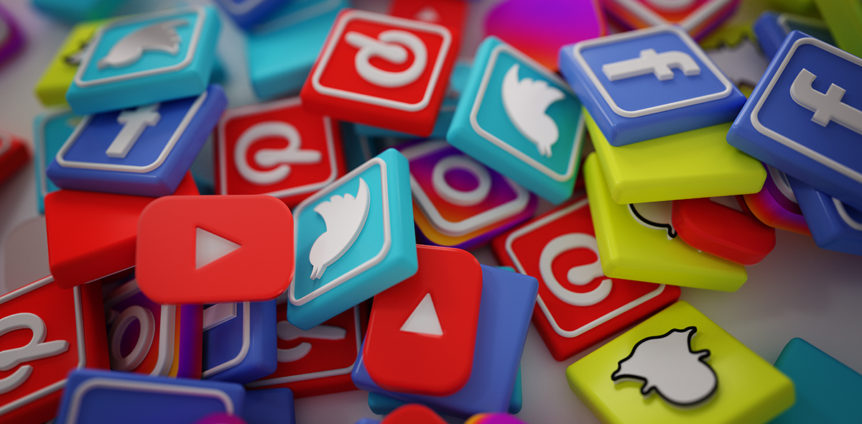Social media is one of the fastest changing industries out there. Sometimes a cutting-edge technology changes the social game, or an old idea (e.g. virtual reality) gains viral popularly. Either way, the results always have a huge impact and 2017 has been no different. Here are five social media trends that will continue to dominate 2017 and 2018 undoubtedly as well.
Video Content
Video content has become a HUGE part of the modern user engagement on social; increasingly so in recent years. It’s not hard to understand why; the rich interactive content platform allows messages and stories to be communicated more effectively with many times the impact. The versatility of video is also very important. With the right copy and design elements incorporated into the video, video can allow you to provide a clear message even when the viewer may not initially commit to turning the sound on. Expect to see more advertising & brand messaging carried out through video formats.
Side note – short videos are very hot right now. People love watching 30-second snackable clips one after another.
Engaging Content is an absolute MUST
In the modern day realm of social media marketing where paid content continues to reign, it’s incredibly difficult for brands to show organic social content to much of its audience.
When planning for social, be sure your strategy involves a mix of content. This means providing various types of posts. It also means making various appeals to the audience. Humor is huge. Also consider ways your brand can communicate with sincerity and authenticity, too.
Social isn’t just for millennials anymore
Social media used to just be a playground for the young, wild, and free. Now, platforms across the space are being colonized by older demographics. That’s largely thanks to Facebook, where 53 percent of U.S. users are now 35 or older. (On Twitter, the age split is relatively even as well: About 45 percent of users are at least 35.)
Instagram and Snapchat, meanwhile, remain a haven for the young: 69 percent of Instagram users are under 35, as are an incredible 82 percent of Snapchat users. Every platform is expected to get older by 2020, Snapchat and Instagram especially.
The fight against fake news
Every year, more and more people, especially millennials, are turning to the internet as their main news source instead of TV, newspaper, or radio. As a result, there’s been a rise in “fake news” from sites that deliberately publish and circulate inaccurate information about current events.
We saw the worst of it during the 2016 presidential election — fake news about both candidates was shared widely across Facebook, Twitter, and other social platforms. Now, Facebook is already taking steps to curb fake news appearing on the site. These “news outlets” are no longer allowed to advertise on the platform.
But the fight against fake news isn’t likely to stop there. Germany is already considering legislation to fine social media sites that let fake news proliferate. That’s bound to catch the attention of all the major platforms. Millennials are tech-savvy, get their news predominantly from social media and value honesty, so they’re likely to investigate and verify news they see, push for more transparency from media outlets and reward factual reportage by sharing such content.
Augmented reality becomes a reality
Snapchat selfie lenses brought the idea of augmented reality into the social sphere. Pokémon Go (arguably a social media app) turned it into a sensation in 2016.
So you can’t expect the other social platforms to not jump on the bandwagon in 2017. Mark Zuckerberg has confirmed that Facebook is already experimenting with augmented reality. They recently acquired Masquerade, a live filter and selfie app for live streaming video.
Augmented reality is actually an old technology that’s started to go viral thanks to social media. While Snapchat has come a long way since puking rainbows (their first filter), there’s still a lot of room to expand on the concept in 2017. And just like live video, augmented reality create new opportunities for brands to connect with their audience by sharing experiences, rather than just information, on social media. Almost 75% of millennials are interested in virtual reality, and 2017 may just be the year they blow up the idea of self-insertion into media.
Chatbots are about to take over
Chatbots are a kind of artificial intelligence that can have a conversation with someone. Facebook had integrated them within Facebook Messenger, and businesses are now using them to communicate with customers.
Chatbots are already helping businesses improve customer service by quickly responding to their comments and questions. You can only expect the tool to become more popular in 2017 — especially since social media sites are doing everything they can to keep people on their platform instead of navigating away to a business website.
It’s crucial that your team takes time to analyze the changes brought to social in 2017 and how it should impact your social media strategy this year and into 2018. We anticipate a lot of exciting things to play out this year and we’ll be here to provide insight along the way. Be sure to follow our posts to stay plugged into the social landscape.
Need help developing a social media strategy this year? Give us a shout, let’s talk.
MVP
Megan Van Petten
CEO & President
Van Petten Group, Inc.

